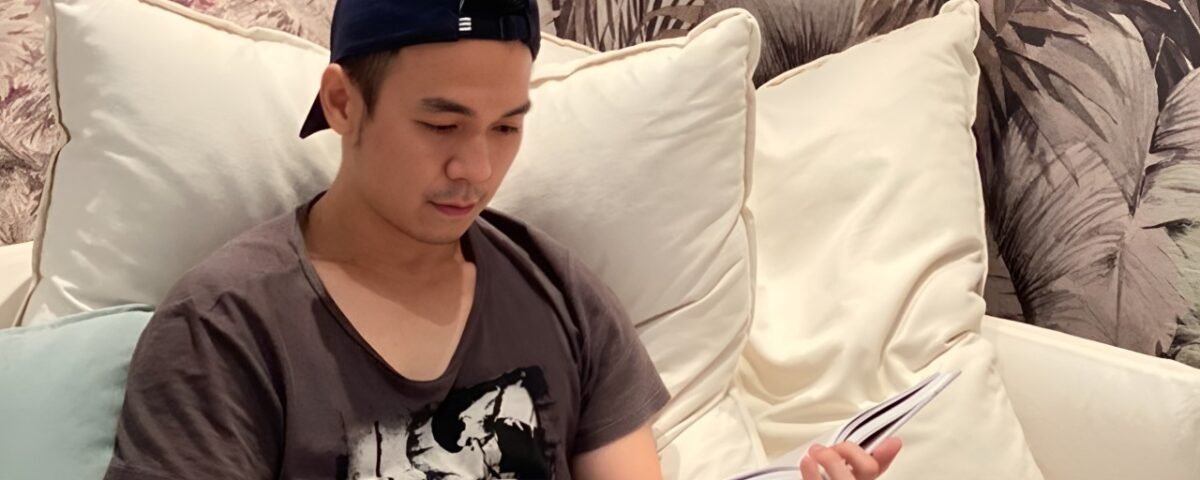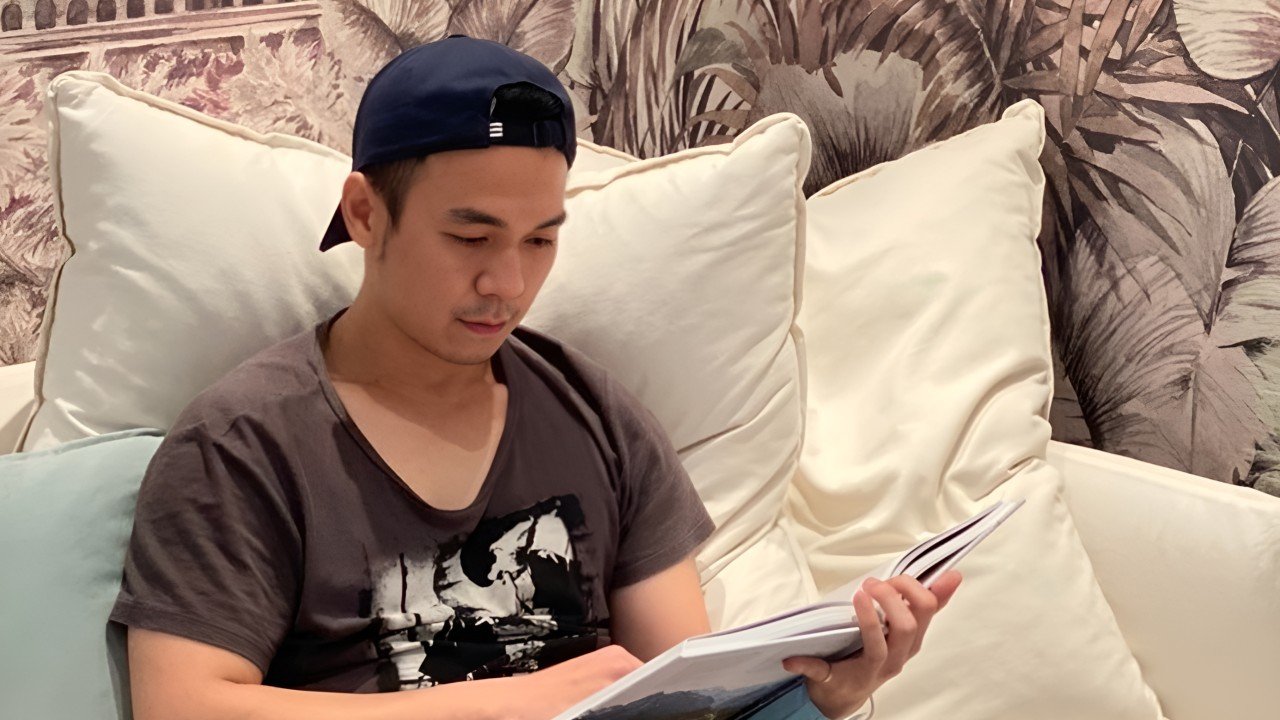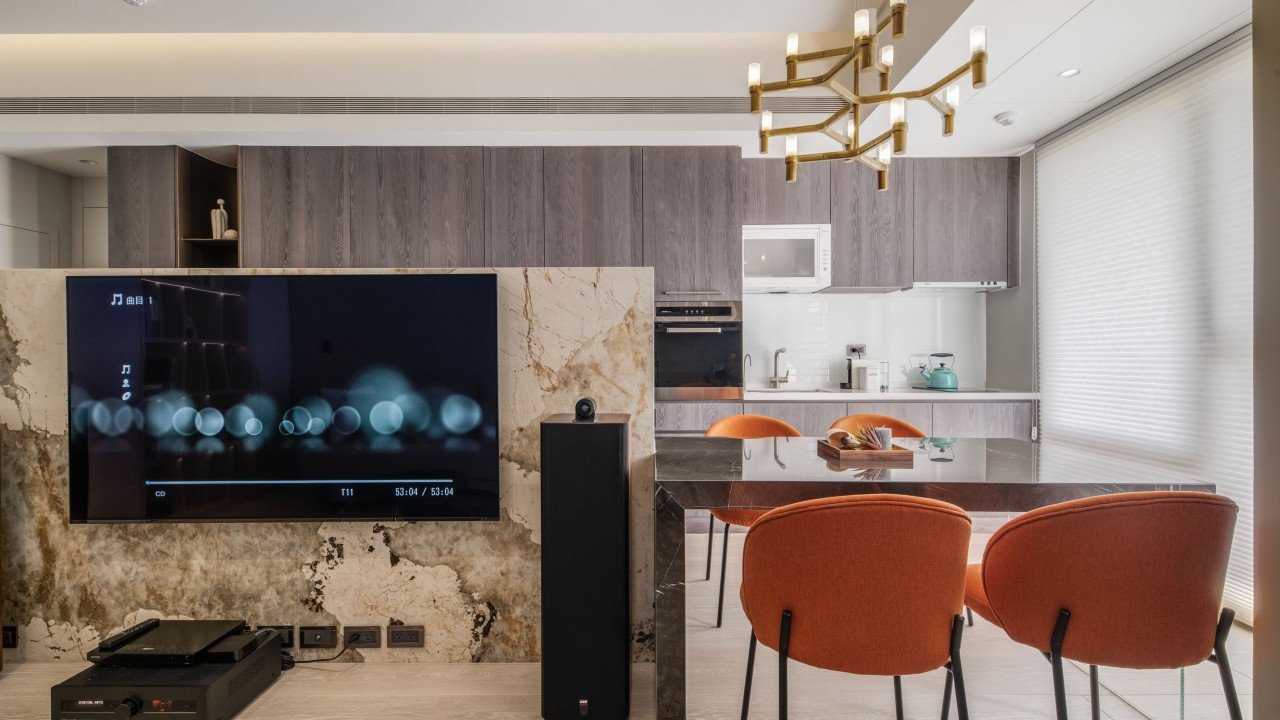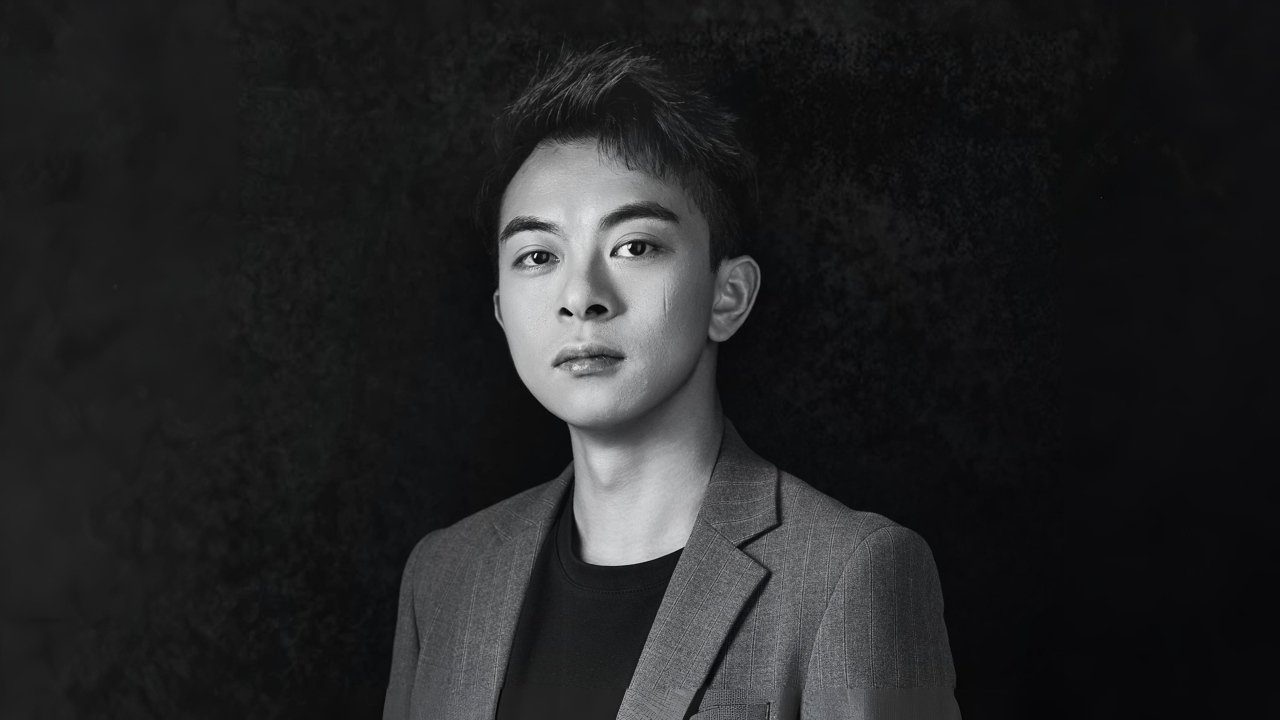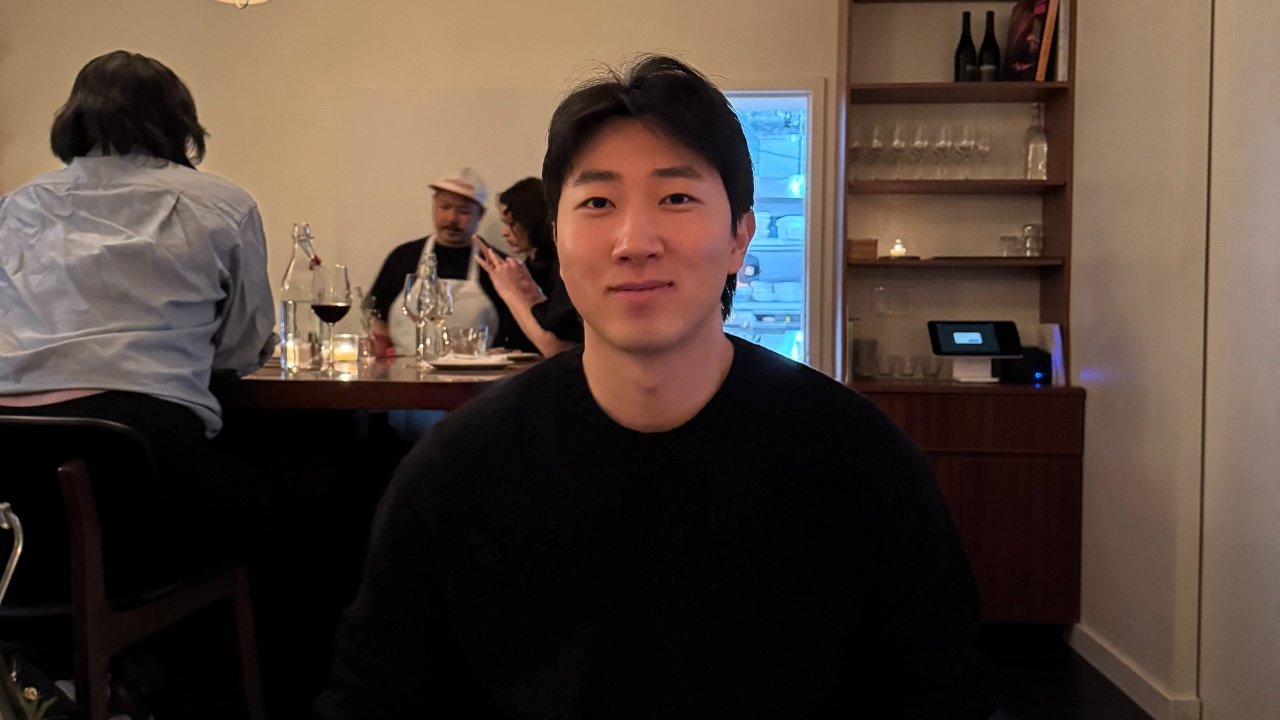
Shan Zhijiang Explores Cultural Depth in the Jianye Zunfu Sales Center
July 1, 2025
Inside the UX Journey of Yuwei Li | Unsweetened and PenguBuddy
July 1, 2025ChiJui Wang
ChiJui Wang, originally trained in electrical engineering, discovered a calling in interior design through a path shaped by chance and reflection. Drawing from a deep sensitivity to space and silence, Wang approaches design as a quiet practice of empathy, creating environments that hold memory, invite clarity, and respond with intention.
Design was never part of my original plan—it found me in the quiet gaps between expectation and discovery.
In high school, I studied electrical engineering. My dream at the time was to enter a fine arts program, but by a twist of fate, I was accepted into an interior design department instead. At first, I wasn’t sure if it was the right path. It wasn’t until I entered the professional world—working on real projects, collaborating with clients, and watching spaces come to life—that I truly fell in love with design.
What draws me to design now is not aesthetics alone, but its ability to hold memory, intention, and transformation. Coming from a small town in southern Taiwan, I was always sensitive to silence, to the invisible feelings that spaces evoke. Design gave me a language to translate that sensitivity into form—to create places where people feel seen, held, and quietly understood.
Being recognised by the London Design Awards is more than a professional milestone—it is a deeply personal affirmation.
For someone who did not grow up confident in their voice or sense of belonging, receiving this recognition feels like a quiet, gentle nod from the world saying: “Your way of seeing matters.” It reassures me that restraint, softness, and silence are not weaknesses in design, but strengths.
This award is also a reminder that spaces shaped with care—however small or understated—can resonate with others across cultures. It encourages me to keep designing with honesty and humility, to stay true to my sensitivity, and to believe that even the quietest expressions have a place in the world.
This recognition came at the right moment—just after I left the city and company I had worked in for many years, due to some personal reasons. I returned to my hometown and started my own design studio, still unsure whether I was truly ready to carry everything on my own.
The London Design Awards gave me something I hadn’t realised I needed: permission. Permission to believe in my own voice, to trust my process, and to take up space without apology. For my studio, Chi Lab, this award is a quiet yet powerful self-introduction—an early signal that our design philosophy resonates beyond our immediate surroundings.
It didn’t change everything overnight, but it opened up meaningful conversations: with potential collaborators, with clients who value depth over spectacle, and with fellow designers who understand the language of restraint. Most importantly, it shifted the way I see my own work—not as something small or uncertain, but as something quietly necessary.
Experimentation, for me, is less about loud disruption and more about quiet subversion. It’s about questioning what is necessary, what can be removed, and how we might experience space differently—emotionally, not just functionally.
In Measured Living, one of the key experiments was removing all internal partitions in a 43㎡ apartment building and replacing them with layered volumes. Instead of defining space with walls, we used tall cabinetry, a sculptural TV wall that doubles as a dining table, and subtle shifts in material to guide movement and define zones. It was a risk, not because of aesthetics, but because it required trust in a different kind of order: one based on feeling rather than logic.
This project taught me that experimentation doesn’t always have to be dramatic. Sometimes, the boldest gesture is to remove, to distil, to let emptiness do the talking.
One of the most unusual sources of inspiration I’ve drawn from was not a place or an object, but a feeling of homesickness.
After moving away from my hometown in southern Taiwan and living in cities for years, I often found myself missing the stillness of early mornings, the slow rustle of banana leaves in the wind, and the way light filtered through the gaps in tiled walls. These quiet memories weren’t dramatic, but they stayed with me. Eventually, they found their way into my design.
In Measured Living, the soft light, the layered transitions, and the restrained palette were all attempts to recreate that quiet atmosphere, not literally, but emotionally. I realised that longing can be a powerful form of inspiration, especially when you’re not trying to replicate the past, but to honour it.
I wish more people understood that the design process is not just about making things look beautiful—it’s about listening, negotiating, and often, letting go.
A good design is rarely born from a single idea. It evolves through hundreds of small decisions: what to keep, what to remove, what to leave undefined so that life can shape it later. It involves sitting with discomfort, navigating uncertainty, and sometimes sacrificing personal preferences in the service of clarity or calm.
Design is not magic. It’s a patient practice of empathy and discipline. The final result may look effortless, but it is the product of deep consideration, emotional labour, and many invisible revisions.
I see design not as a battlefield between client expectations and creative vision, but as a conversation—one where empathy and clarity are more powerful than control.
Clients come to us with real lives, real needs, and real emotions. I listen carefully to those needs, not just on the surface, but beneath the words—what kind of life they long for, what kind of peace they’re seeking. From there, I built a design response that respects their reality while offering something deeper and quieter than they may have imagined.
Staying true to my ideas doesn’t mean rejecting theirs. It means translating their desires through my lens—refining, distilling, and often simplifying—until we arrive at a space that feels not only functional, but honest.
One of the biggest challenges in Measured Living was scale, not in terms of ambition, but of limitation.
At just 43㎡, the original layout was narrow, rigid, and overly compartmentalised. Yet the client asked for something emotionally spacious: a place to host, to listen to music, to work, to display art, and above all, to feel calm. The question was: how do you fit that much life into so little space without it feeling forced?
We overcame this by removing all non-structural partitions and using volumetric layering instead of walls. Tall cabinetry, sculptural surfaces, and material transitions replaced traditional boundaries. But the real challenge wasn’t spatial—it was emotional. It required restraint. It meant resisting the urge to fill, and trusting that openness, when crafted with care, can feel more complete than complexity.
When I hit a creative block, I don’t try to force inspiration—I return to quiet.
Sometimes that means taking a long walk, observing how light moves or how people interact with space. Other times, it means doing something completely different—exercising, cooking, or simply allowing myself to step away from the project for a while.
If time allows, I intentionally shift my focus to something unrelated. Letting distance form between myself and the problem often brings clarity when I return. For me, creativity isn’t about intensity—it’s about rhythm. Stillness, motion, withdrawal, and return are all part of the process.
I infuse my designs with values shaped by quiet places, personal transitions, and a deep longing for emotional safety.
Growing up in a small town in southern Taiwan, I became attuned to subtle rhythms—how stillness feels, how light softens edges, how silence can hold meaning. Later in life, moving away, facing uncertainty, and rebuilding my path taught me the importance of restraint, clarity, and care.
What I bring into my designs is not just aesthetic judgment, but emotional memory. I design with the belief that space should never overwhelm the people who live in it.
Instead, it should hold them—gently, honestly, and without noise. My work is always an attempt to create places where people can feel safe to be soft, quiet, and fully themselves.
To be honest, I don’t see myself as a “successful” designer. There are so many others whose skills, ideas, and confidence I deeply admire. I still have doubts. I still feel lost sometimes. And maybe that’s exactly what I want to share.
You don’t have to be certain to keep going. You don’t need to feel brilliant to do meaningful work. Just keep showing up—with honesty, with care, and with a willingness to listen. Success isn’t always loud. Sometimes, it’s just the quiet persistence of not giving up on what matters to you.
There isn’t just one designer I’d want to collaborate with—there are many, each representing a different kind of lesson I still long to learn.
I admire John Pawson for his profound restraint and ability to create presence through absence. His spaces teach silence as a language.
I’m drawn to Neri&Hu for their layered storytelling, cultural depth, and how they bring narrative and material together in unexpected ways. Their work feels both grounded and intellectual.
I also deeply respect Tony Chi, whose hospitality designs hold emotion and memory so carefully. He designs for atmosphere—spaces that are felt before they are seen.
These designers are very different, but what they share is sensitivity, clarity, and a refusal to design for applause. That’s what I hope to learn more of—not how to decorate, but how to listen.
I wish more people would ask me: “How do you want people to feel in your space?”
Because design, for me, is never just about what it looks like—it’s about how it holds you.
I want people to feel safe, unhurried, and gently returned to themselves. I want them to enter and exhale. To be quiet, not because they’re told to, but because the space invites it. If a project can create that kind of emotional rhythm, then I feel it has done its job.
Winning Entry
Measured Living: A 43㎡ Response to Urban Stillness | 2025 London Design Awards
In response to the spatial constraints of a 43㎡ apartment in a dense urban environment, this project redefines the modern home through thoughtful zoning, material sensitivity, and poetic restraint. The original layout was narrow and compartmentalized. We removed all internal partitions and... (read more here)
ChiJui Wang
ChiJui Wang, originally trained in electrical engineering, discovered a calling in interior design through a path shaped by chance and reflection. Drawing from a deep sensitivity to space and silence, Wang approaches design as a quiet practice of empathy, creating environments that hold memory, invite clarity, and respond with intention.
Check out more design insights through Prototyping Possibility: A Conversation with Designer Wenyu Du here.

